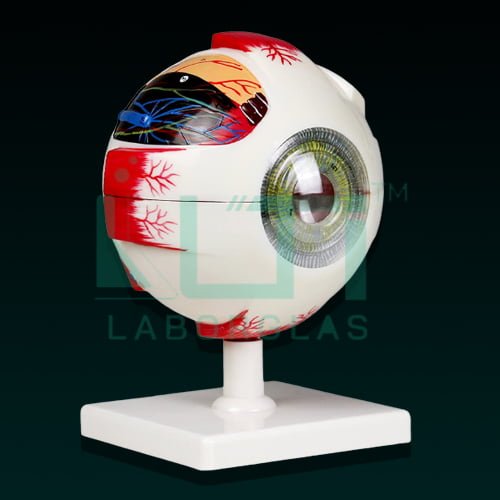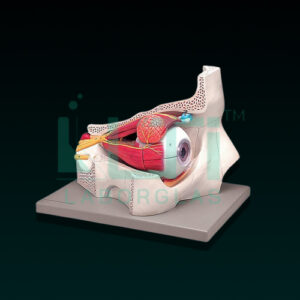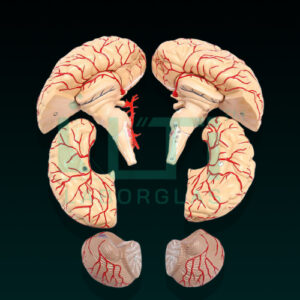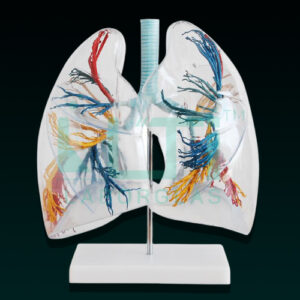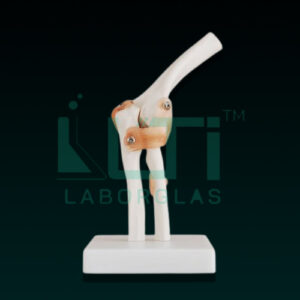- 15 x 15 x 32 cm. Model is highly magnified (6 times enlarged).
- Model is in 7 parts.
- Ideal for basic anatomical study of eye. Show sclera, cornea, eye muscle attachments, iris, retina, optica nerve & venels.
- Mounted on a removable stand.
- 34 features marked.
- Key card/manual provided.
An eye on a stand model serves educational, medical, and research purposes, offering a detailed representation of the human eye. Here’s a brief overview of its uses:
- Anatomy Education: Used for teaching anatomy, allowing students to study the structures and components of the human eye in detail.
- Ophthalmology Training: Beneficial for ophthalmology education, illustrating the anatomy of the eye for in-depth study and understanding.
- Patient Education: Enables healthcare practitioners to visually explain eye conditions, disorders, and treatment options to patients.
- Optometry Training: Relevant in optometry education for understanding the structures of the eye and their role in vision and eye health.
- Vision Science Research: Used in vision science research to study the anatomy, physiology, and functioning of the human eye.
- Optical Instrument Calibration: Practical for calibrating and demonstrating the use of optical instruments such as lenses and scopes.
- Eye Clinics: Displayed in eye clinics to enhance patient understanding of eye conditions and procedures.
- Ophthalmic Surgery Planning: Healthcare professionals may use this model for surgical planning and visualization of eye-related procedures.

